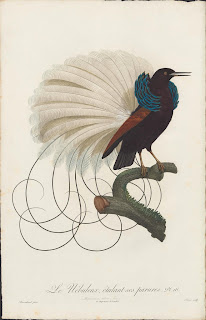Marbled Murrelet - Brachyramphus marmoratus

While spending my five days out on San Juan Island staring out at the Salish Sea, I spotted all sorts of creatures: harbor seals, Dall's porpoises, orcas, Bald Eagles, Black Oystercatchers, Rhinceros Auklets, and Marbled Murrelets. Jay and I would set up camp at a quiet spot near the old lighthouse at Lime Kiln Point, read our books (Jay read Steinbeck, I read a book about Ernest Shackleton), and wait. One day we were treated to a sighting of a baby harbor seal, and then later (amazingly) a pod of orcas. The islands are famous for their 'resident' pods of orcas that feed solely on salmon. The pod that we saw, however, was a family group of 'transients'. The transient orcas dwell out in the Pacific, and are genetically distinct from the resident populations. These orcas also have a much more varied diet by feeding on seals, sea lions, and other whales. Our pod came quite close to shore. We could see and hear the mist coming from their blowholes as they surfaced, and watched as they moved through tangled forests of bull kelp.
There were plenty of bird sightings as well, of course. It's always a treat to visit one of the coasts, as I always see species that I would never have the chance to see back home in the land locked Midwest. One of these is the Marbled Murrelet. Murrelets are sea dwelling, diving birds of the Alcid family. They are unique among Alcids, though, because they nest in old growth forests along the coasts. For years, ornithologists could not locate where these birds were nesting due to their secretive, solitary habits. A reward was even offered to the first person to locate a Marbled Murrelet nest. After about a century of searching the first nest was found in the 1960s. Even to this day, very little is known about the breeding habits and behavior of this bird. It is, however, apparent that numbers are declining due to logging and oil spills (surprise!). My sighting was of an adult in non-breeding plumage (as shown above) bobbing about in the Salish Sea. It seemed to happily ride the waves, and then would disappear quickly beneath the surface, rising a couple of minutes later with a tiny meal of fish.


it looks so big compared to the tiny fish in its beak
ReplyDeleteHi Margie, murrelets aren't very big. They're about the size of a small duck or teal.
ReplyDeleteA marbled murrelet! That's so cool!
ReplyDelete